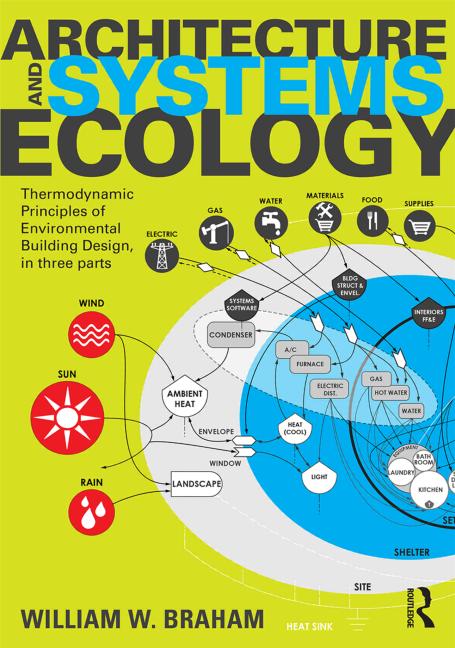Sammamish High School's new campus replaces an existing one-story facility with a three-story, state-of-the-art educational facility spanning 320,000 square feet and serving nearly 1,000 students in grades 9-12. Designed by Integrus Architecture, Sammamish is the last of Bellevue School District's high schools to be modernized. According to Jack McLeod, director of facilities and operations for the school district, "Sammamish will be the crown jewel."
Both ornamental and functional, the high school features Rockfon stone wool acoustic ceiling systems throughout the high-profile facility. In total, distributor Valhalla Construction Products provided more than 250,000 square feet of Rockfon ceiling systems to installing contractor Forrest Sound Products.
Helping enrich modern learning and living, Rockfon innovative stone wool products support natural solutions and sustainability, as well as peace of mind and quality of life.
Collaborative Approach
According to Integrus, Sammamish High School's replacement and modernization project involved multiple phases throughout four years. The new three-story high school integrated an existing performing arts facility into the first phase of construction. In addition, a new two-story athletic building, glass arts facility and concession/ticket booth are sited to work with existing fields.
Central to the school's design is a curriculum emphasizing Problem-Based Learning (PBL) and STEM programs. STEM is the educational acronym for science, technology, engineering and math. Students are taught to develop critical thinking skills in PBL assignments by identifying the problem, then designing, engineering and fabricating appropriate solutions.
Assignments include a need for "clean" spaces, with computer access for engineering and drawing, as well as "dirty" spaces for active, creative fabrication. PBL also places high demand on spaces for teaming and collaboration, as well as areas for performance and display of their work.
According to McLeod, "Flexibility is still really one of the key elements." The building is designed with the future in mind and with the building able to adapt to different needs over the years.
Listening and Learning
"The architect, school district, principal, teachers and students collaborated to create a school that focused on making a positive impact for both the natural environment and student learning environment," summarizes Ben Pedersen, Rockfon district sales manager for the Pacific Northwest. "The goal was to create the high school of the future – for sustainability, learning environment, community outreach and safety."
With the school's emphasis on incorporation of Career Technical Education and STEM curriculum, traditional "shop" and vocational education areas are located in the heart of the facility. "This presents new challenges for noise control," Integrus explained. "At Sammamish High School, for instance, the library is directly above the major fabrication studios and needed significant sound isolation in the floor ceiling assembly between the two uses."
"Creating a good acoustic experience improves learning and understanding. Every student should have the same opportunity to hear and understand what is being said whether they are learning to weld in a noisy shop or reading Latin in the library," explains Rockfon Acoustic Specialist Gary Madaras.
Integrus worked with acoustical design consultant, Sparling, to understand baseline acoustics for high school classrooms and other environments. As the ceiling installation contractor, Forrest Sound Products' senior project manager, Charles Roetcisoender, helped select the right products for the specification.
"His understanding of the acoustical significance of placing Rockfon tiles throughout [the project], along with meeting Integrus' visual requirements, not only produced a beautiful looking school, but created an education space that is performing at a peak level," praised Forrest Sound Products' president, Doug Bixel. "One just needs to walk through this school to see and feel the difference."
Madaras continues, "Due to its fiber structure, stone wool's high-performing, sound-absorptive properties provide Rockfon ceilings with excellent noise reduction capabilities. This also reduces reverberation and improves speech intelligibility."
"Rockfon also provided technical product guidance allowing for easy installation in the manufacturing or robotic lab spaces where high volume noise activity occurs," notes Integrus.
Pedersen proudly adds, "Sammamish High School was the first in the Northwest to use Rockfon Alaska and Sonar acoustic stone wool ceiling panels with high fire performance and the best sound absorption."
Safety and Sustainability
Along with optimizing acoustics for concentration and comfort, Rockfon ceilings also support the newest educational building codes and regulations," emphasizes Pedersen. "Providing a great line of defense against indoor health hazards, our Rockfon stone wool ceiling panels are resistant to mold, bacteria and humidity, and are GreenGuard Gold Certified for low VOCs. This stringent certification process considers safety factors that may impact people who are more vulnerable, such as children."
Complementing the stone wool panels, Rockfon Chicago Metallic suspension systems also have no reportable VOCs in the finished product. For Sammamish's ceilings, Chicago Metallic 4000 Tempra 9/16-inch and 1200 Seismic 15/16-inch suspension systems were installed by Forrest Sound to meet the project's seismic design category requirements.
Enhancing safety with sustainability, Chicago Metallic suspension systems contain up to 90 percent recycled content and are 100 percent recyclable at the end of their useful lifecycle. Rockfon stone wool ceiling panels contain up to 42 percent recycled materials and primarily are made from abundantly available basalt rock.
Lighting the Way
At the heart of the school, a three-story study common area is capped with skylights and smooth, white Rockfon ceiling panels to reflect the daylight. The third floor hosts art and science studios with high ceilings and lots of natural light.
As lockers are unnecessary due to the digital curriculum and student laptops, window walls have replaced traditionally opaque barriers between classrooms and the hallways. This provides greater connection between students and staff, as well as extends daylight more deeply into the building's interior.
In corridors, classrooms and common areas, the white surface of Rockfon ceilings can reflect up to 86 percent of available light. This better distribution of natural light helps educational facilities to lower electric lighting loads and reduce cooling costs, saving both energy and associated costs.
Bixel at Forrest Sound Products worked closely with the architect and Rockfon to offer a ceiling system that was compatible with the electric lights, the surrounding conditions and the performance specifications. Pedersen praised the effort saying, "Doug presented a solution to the architect that perfectly accommodated the lights and acoustic ceiling panels within a suspended grid system that met the seismic requirements. The ceilings were installed on time and to the architect's specifications."
Smooth Installation, Smooth Finish
Sammamish High School's construction started in May 2013 and divided into multiple phases, until it was fully finished in 2017, on budget and on time. Integrus says, "The product was cost-effective and easy to install."
Forrest Sound also demonstrated to the architect that Rockfon ceiling panels present a neater, cleaner edge appearance than other panel options. Pedersen notes, "Our tiles are smooth, with no fissures, allowing the architect to create a homogenous flow from space to space. This is the look that designers prefer. Rockfon ceiling panels helped the designers create amazing, beautiful spaces and also protect the space with their unique qualities."
Recognizing Sammamish High School's "amazing, beautiful space," its design was honored by the International Interior Design Association (IIDA) Northern Pacific Chapter at the 10th annual INawards in the Design INconcept category. The jury was impressed by the innovative circulation scheme and the way the building rhythm creates opportunities for informal learning and socialization spaces.
- Owner: Bellevue School District; Bellevue, Wash.; http://www.bsd405.org
- Architect and interior design: Integrus Architecture; Seattle; http://www.integrusarch.com
- Acousticians: Sparling, a Stantec company; Lynnwood, Wash.; http://www.sparling.com
- General contractor: Spee West Construction Company; Edmonds, Wash.
- Installing contractor: Forrest Sound Products; Redmond, Wash.; http://forrestsound.com
- Distributor: Valhalla Construction Products; Silverdale, Wash.; http://www.valhallaproducts.com
- Rockfon ceiling systems: Rockfon Alaska and Sonar stone wool ceiling panels with Chicago Metallic 4000 Tempra 9/16-inch and 1200 Seismic 15/16-inch suspension systems; Chicago; http://www.rockfon.com
- Videos: https://www.edutopia.org/sammamish-problem-based-learning-school-reform; https://www.youtube.com/watch?v=avzLzfIbYNc









